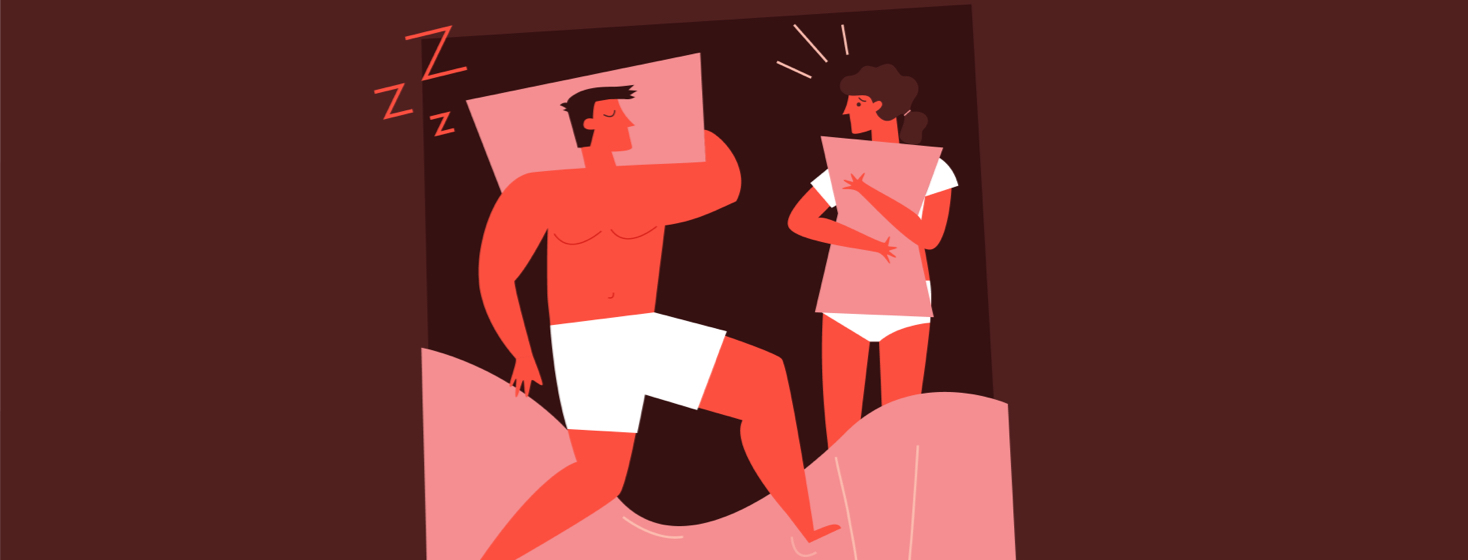From Sleeping Alone to Sleeping Together: Changing Arrangements When You Have Insomnia
I feel that many of the things that impact our sleep are pretty unconscious. For example, until we have sleeping difficulties, we have a relationship with our bed that is one of "bed and sleep." After insomnia sets in and we spend months tossing and turning and striving for sleep, that relationship becomes muddied.
It begins to look more like, "Bed and sometimes sleep ... but mostly angst/worry/awakeness." These connections are not created on purpose but are a side effect of the fact that we can be "trained" to associate certain things and places with certain states and feelings.
Using stimulus control to our advantage
A key part of the No. 1 recommended approach to treating chronic insomnia is a technique called stimulus control. We can use this technique to "retrain" ourselves to associate bed with sleepy feelings rather than the awake, alert, and anxious ones that characterize insomnia.1
There is no one "right" sleeping arrangement
I am sometimes asked how a person can "get used to" sleeping in the same bed as another person. Maybe they have been on their own for a long time, or perhaps 2 people have slept separately because of insomnia and want to sleep in the same bed again.
First, I'm of the view that there is no one "right" sleeping arrangement! I think that if an arrangement works for both parties and the relationship, there's no need to change it until and unless they want to.
Overthinking change
Say someone wants to make this change and is worrying about not being able to sleep. Commonly, they will go to bed and the partner will be there or come in later, and they will get into bed wondering if they will sleep. This kind of performance anxiety is enough to make it difficult to fall asleep!
Not only will their brains be in overdrive and overthinking the situation, but their alert system will also be switched on watching to see if it happens. This is a recipe for saying, "See, it's tough for me to sleep with someone else," when in reality, that may not have been all of what was keeping them awake.
Reducing worry and building sleep drive
In my experience supporting people with their sleep, a helpful approach is to have the other person in bed and possibly sleeping before you head to bed. This will help reduce the worry of being woken up when the partner arrives.
I also suggest that people stay up as late as possible to be as sleepy as possible, increasing the chance that sleepy feelings will take over. Combined with having a fixed wake-up time in the morning, this will help to build sleep drive strongly and consistently and encourage sleep when going to bed.
Featured Forum
View all responsesNeutralizing wakeful worry
It can also be helpful to ensure that the person isn't lying there awake in bed wondering if this is going to work. Retraining the sleep associations to include a person already in bed can be really helpful in neutralizing the "wakeful worry" that can commonly get associated with making a significant change to a sleeping situation.
Have you made the leap to sleeping alone or sleeping together successfully? How did you do it? I'd love to know!

Join the conversation